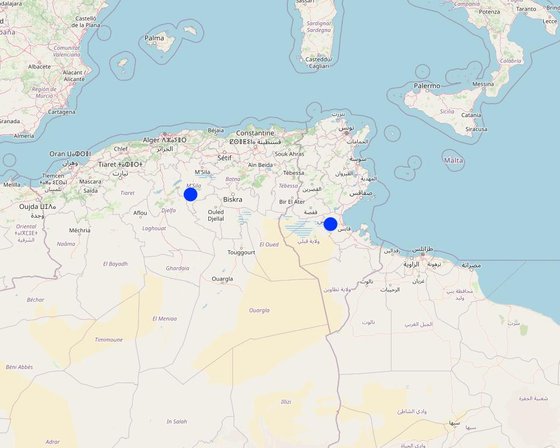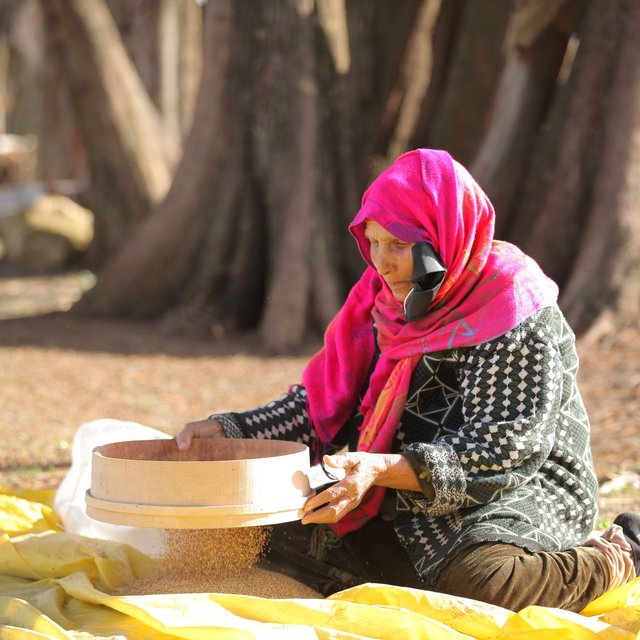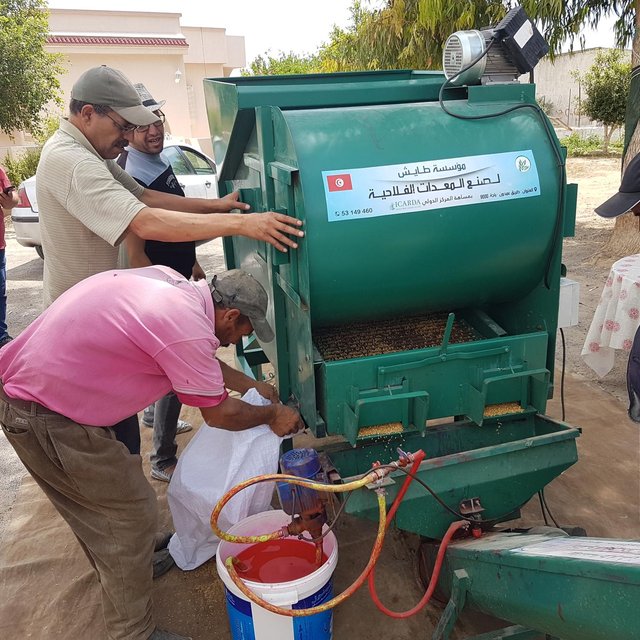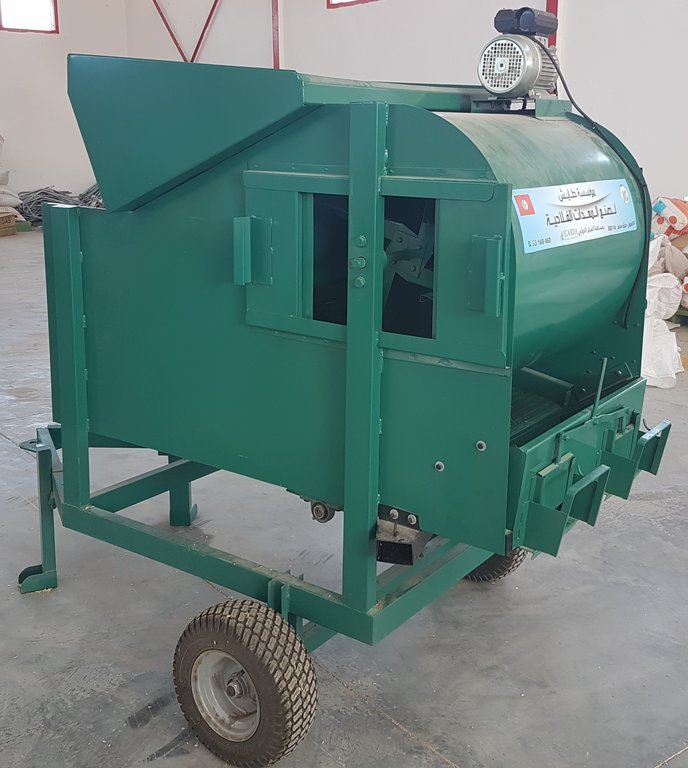



In Tunisia and Algeria, the agricultural system is characterized by low levels of mechanization, particularly among small and medium-sized farmers who cannot afford expensive imported machines. As a result, a substantial amount of manual labour is required to carry out various agricultural operations, such as seed cleaning, which is traditionally done by women and children. While seed production is often done by large suppliers, this does not always satisfy the demand. Therefore, many smallholder farmers in Tunisia prefer to use their own seeds, despite the time-consuming manual cleaning process and the risk of lower quality.
To address these issues, the International Center for Agricultural Research in Dry Areas (ICARDA) collaborated with national partners to develop a mobile seed cleaning machine for small-scale farmers. The prototype, designed and tested with input from a local manufacturer, is suitable for the primary field crops (such as wheat, barley, vetch, and faba beans) in Tunisia. The machine sort out damaged or small seeds and rock or pebbles, while treating the remaining seeds by removing contamination or weeds, to ensuring quality and longer shelf-life.
The mobile seed cleaning machine, with a capacity of approximately 800 kilograms per hour depending on the seed type, was distributed to four farmer cooperatives, serving a total of 1,000 small-scale farmers. In order to promote ownership, the farmers contributed to a portion of the costs and received training on how to operate the machine effectively.
When using the mobile seed cleaning machine, farmers have the option to choose between two methods: solely cleaning the seeds or cleaning and treating them. The cost for cleaning alone is around 2 Tunisian Dinar per 100 kilograms, while the cost for both cleaning and treating, which includes the application of a fungicide, is 8 Tunisian Dinar per 100 kilograms. Life time is estimated between 5 and 10 years and worn out parts can easily be replaced.
The introduction of the mobile seed cleaning machine has several advantages, including a decrease in workload for women and children, improved production and quality of crops, higher productivity of the land, reduced dependence on imported seeds and machinery, and the promotion of local value chains and social cohesion through cooperative ownership and utilization of the machines.
However, there are still some challenges to overcome. For example, the initial prototype required heavy bags of seeds to be lifted to a height of two meters, leading to additional labour requirements and reduced efficiency. This challenge was addressed by equipping the machine with a conveyor screw, which can double its capacity at an additional cost. Additionally, the cost of purchasing the machine can be a significant investment for farmers, but this can be overcome through collective buying and organizing themselves in cooperatives.
In conclusion, the mobile seed cleaning machine represents an innovative solution that improves the (local) value chain and livelihoods of smallholder farmers in Tunisia by reducing workload and costs, particularly for women and children. This technology has the potential to be scaled up and benefit other regions and cooperatives.
ICARDA’s work on Small-Scale Seed Cleaning Unit is supported by the CGIAR Research Program on Livestock, the IFAD-Funded CLCA Project, the GIZ SWC@Scale project as part of the ProSol global program, and the CGIAR initiative on Agroecology in Collaboration with National Partners in Tunisia and Algeria (OEP-Tunisia, IRESA-Tunisia, INRAT Tunisia, ITGC-Algeria, GIZ Tunisie, DGACTA-Tunisie)

Location: Tunisia
No. of Technology sites analysed: 2-10 sites
Spread of the Technology: applied at specific points/ concentrated on a small area
In a permanently protected area?: Nee
Date of implementation: 2019
Type of introduction


| Species | Count |
| sheep | n.a. |
| goats | n.a. |




| Specify input | Unit | Quantity | Costs per Unit (Tunisian Dinar) | Total costs per input (Tunisian Dinar) | % of costs borne by land users |
| Equipment | |||||
| Seed cleaning machine with conveyor screw | 1.0 | 12500.0 | 12500.0 | ||
| Total costs for establishment of the Technology | 12'500.0 | ||||
| Total costs for establishment of the Technology in USD | 4'166.67 | ||||
| Specify input | Unit | Quantity | Costs per Unit (Tunisian Dinar) | Total costs per input (Tunisian Dinar) | % of costs borne by land users |
| Labour | |||||
| Operating | person-hour | 0.1 | 10.0 | 1.0 | |
| Equipment | |||||
| Electricity | kWh | 3.0 | 0.066 | 0.2 | |
| Plant material | |||||
| Uncleaned seed | kilogram | 100.0 | |||
| Fertilizers and biocides | |||||
| Fungicide (for treating) | litre | 0.2 | 30.0 | 6.0 | |
| Total costs for maintenance of the Technology | 7.2 | ||||
| Total costs for maintenance of the Technology in USD | 2.4 | ||||
Is improved due to better yields and no/less costs on purchased seeds
Cleaned seeds could be sold
Mechanically cleaning substituted the manual cleaning (often done by women and children)